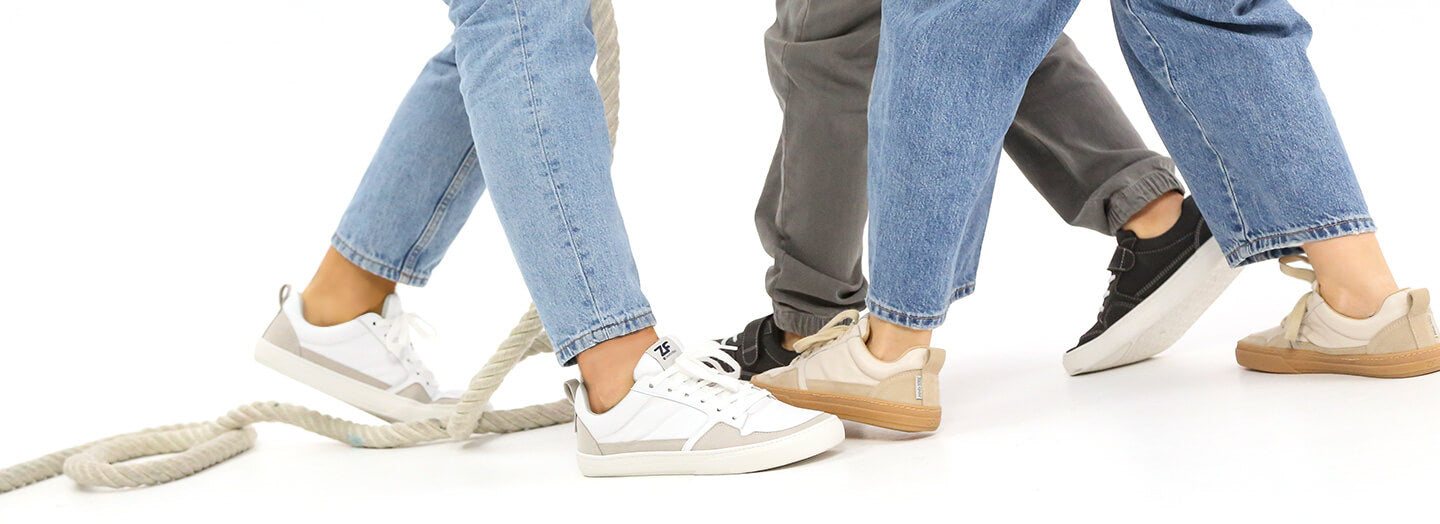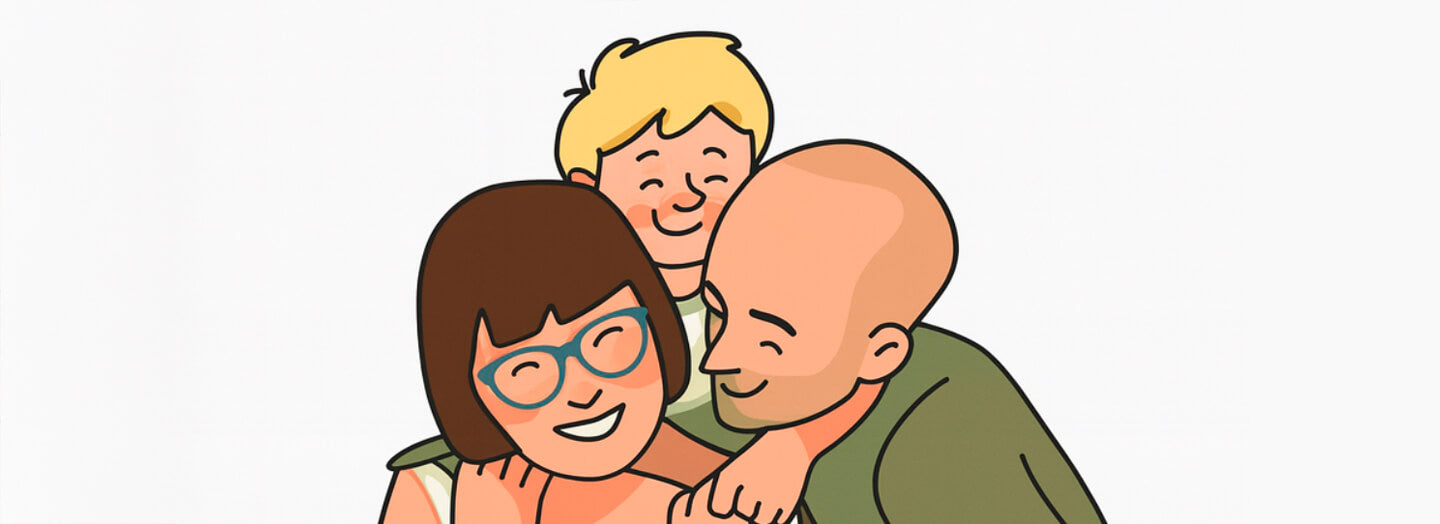Barefoot footwear, or minimalist footwear, has gained popularity in recent years as a healthy and natural alternative to traditional footwear 💪. Lighter and more flexible, it tries to imitate the feeling of walking barefoot and allows the foot to move more naturally. You already know that at Zapato Feroz we are firm defenders of this type of footwear 🥰, so today we want to tell you why.
What does barefoot mean?
The word "barefoot" is of English origin and literally means barefoot. In the footwear sector, it refers to shoes designed to offer minimal intervention between the foot and the ground. These shoes are characterized by a thin, flexible sole without a high heel, which allows the foot to perform its natural movements without restrictions. 😊
The main idea of minimalist or barefoot footwear is to replicate the experience of walking barefoot, providing the foot with only basic protection from the elements and rough surfaces, but allowing it to receive all the sensory information from the surfaces it walks on. ⛰️
Barefoot vs traditional shoes
The main difference between barefoot shoes and traditional shoes lies in the design of the shoe 👞. While conventional shoes often feature supports and cushioning that can alter the natural biomechanics of the foot, barefoot shoes remove these elements to allow the foot to move in the same way and receive information as if it were barefoot 👣. This absence of artificial support and cushioning allows for greater strength and stability in the feet and legs.

Where does barefoot or minimalist footwear come from?
The concept of minimalist footwear is not new. In fact, it is based on ancient practices of various cultures from around the world, who walked barefoot or wore very simple footwear.
Did you know that the adult foot is made up of 26 bones, 33 joints, 107 ligaments and 19 muscles? 🤯 This complex piece of engineering is capable of supporting the weight of the entire body, performing movements with great flexibility to maintain balance, and has a great cushioning capacity to absorb impacts produced, for example, when running. 🏃♀️
The birth of interest in barefoot footwear in the modern world began with studies demonstrating the benefits of barefoot running and walking , which prompted the creation of shoes that offered a similar experience without the risks of injury from dangerous surfaces 💪. Initially, it was adopted by professional and amateur runners, although thanks to its benefits it has spread to the rest of society.
Health benefits of barefoot shoes
But what are the specific advantages of wearing minimalist footwear? Beyond fashion or social conventions, wearing more respectful shoes has interesting benefits, not only for athletes, but for everyone, especially children:
- We have already talked about the reception of stimuli and signals. Barefoot footwear allows the foot to receive more information about the environment, which helps to better develop proprioception, that is, knowledge about the environment and the position our body occupies in it.🏞️
- Due to the lack of support elements that conventional footwear does have, such as cushioned soles or buttresses, barefoot shoes promote greater strengthening of the foot and leg . In fact, the process is just the opposite: it is conventional shoes that cause a progressive atrophy of certain muscles, which returns to their natural state with minimalist footwear. 🦵
- The absence of a drop or raised heel helps to improve body posture , which in turn can have a positive effect on reducing back and knee pain , as well as correcting the gait, which in turn helps to reduce the possibility of injuries to muscles, ligaments and tendons. 👌
- The flexibility of barefoot shoes and their design, specially designed to adapt to the natural shape of the foot, improves comfort and reduces the chances of chafing, pressure or friction. 🙂
- The muscles of the feet, free to adapt to the irregularities of the terrain in a natural way, work more efficiently and, therefore, with less energy expenditure and less metabolic effort . 🤩
Is it good for children to wear barefoot shoes?
Of course! Respectful footwear is beneficial at all ages, but especially to protect little developing feet 😍 : the greater space inside the foot, which allows for better development of the foot; the thin and flexible sole, which contributes to the awareness of the environment and to strengthening the tread and improving walking; and the comfort of this type of shoe, perfect for exploring the world without limits, make barefoot footwear the best option for the little ones in the house. 💪

Are there cases in which it is not advisable?
Despite its interesting benefits, there are cases in which barefoot footwear may not be recommended: excessive overweight or previous injuries, such as pronated feet or flat feet , may advise against the use of minimalist footwear.
In these cases, it is always advisable to consult a specialist 👩⚕️ before switching to this type of footwear and always make a correct transition between conventional footwear and barefoot, as we explain below.
How to go from regular shoes to barefoot
But if it is so beneficial, why is it necessary to make a transition before switching definitively to minimalist footwear? Very simple: traditional shoes have supports and reinforcements that, little by little, modify the biomechanics of the foot and the muscles of the leg, leading to the “atrophy” of certain muscles so progressively that we do not notice.
When you go barefoot, all of these supports suddenly disappear, so your foot must return to its natural stride, reusing and developing muscles and tendons that were “asleep” 👣 . It is common, for example, for your calves to “get loaded” at first after spending several hours in a minimalist shoe: this is because, when the drop (heel lift) common in traditional footwear disappears, they must make a greater extension effort when stepping.
For all these reasons, if you have been wearing traditional footwear all your life and want to switch to barefoot, it is recommended to have a slow transition, gradually introducing them into your daily routine and checking the consequences . In case of pain, discomfort or inconvenience, do not hesitate to consult a professional specialist to rule out possible previous ailments or injuries, such as hollow feet, which make it advisable to use a custom insole (yes, you can wear orthotic insoles with barefoot shoes!). 💪
What are the characteristics of barefoot shoes?
If you want to buy new shoes and you have doubts about whether they can be considered respectful or not, always carry with you the mini checklist that we leave you below to resolve your doubts quickly (hint: all the footwear you will find at Zapato Feroz is barefoot):
- Sole : should be thin, hard and flexible in all directions, especially in the forefoot area. ✔️
- Drop : Never. The shoe must be completely flat from heel to toe. ✔️
- Last : wide and comfortable, to allow free movement of the fingers. ✔️
- Materials : natural, breathable and environmentally friendly, such as leather, suede or textile. ✔️
- Supports and reinforcements : they should not have them. ✔️
Where to buy barefoot shoes?
If you want to switch to environmentally friendly footwear and don't know where to start, visit our online store or come and see Ferozland 🥰: we have the best options for barefoot footwear for adults and environmentally friendly children's shoes , with cheerful and modern designs and superior quality, which guarantees comfort with every step.






